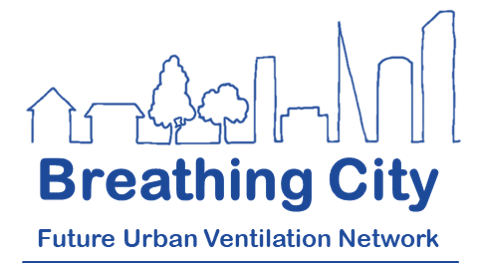The projects and resources listed below are also associated with air quality and may be of interest. If you’d like an item added to this list, please email contact@breathingcity.org
The Clean Air Programme aims to bring together leading researchers from across atmospheric, medical and social science to better predict exposure to air pollution and its effects on vulnerable groups such as children and the elderly. It will identify practical and usable solutions to air pollution to help policy makers and business protect health and work towards a cleaner economy. There are 6 networks under the Clean Air Programme, one of which is Breathing City. The others are:
- Tackling air pollution at school (TAPAS) is a multidisciplinary network designed to bring stakeholders together from across society to develop the research base to design and operate healthy schools now and in the future. Our aim is to build collaboration and discussion via our events programme, our working groups, our research fund, and by engaging directly with children, schools and parents.
- BioAirNet takes a transdisciplinary approach to understand the complexity and connectivity among people, biological particulate matter (BioPM) exposure and health impacts across the indoor/outdoor continuum to inform interventions development, prioritisation and assessment of environmental and health interventions.
- HEICCAM is an innovation research network integrating interdisciplinary researchers and stakeholders to develop indoor and outdoor air quality solutions as we transition to a low carbon future. The network will build evidence on the consequences for exposure to air pollution of actions aimed at tackling climate change and poor air quality, with particular focus on the home environment.
- TRANSITION Clean Air Network seeks to deliver air quality and health benefits associated with the UK transition to a low-emission transport economy. The academic investigators and policy, public, commercial and not-for-profit sector partners will undertake joint research, to co-define indoor and outdoor air quality challenges and co-deliver innovative, evidence-based solutions.
- Air Pollution Solutions for Vulnerable Groups (CleanAir4V) identifies, develops, and evaluates robust solutions that reduce the impact of indoor air pollution on two vulnerable groups: children, and those with pre-existing conditions such as COPD. A multidisciplinary approach is taken focusing technological and behavioural intervention.
- STFC Air Quality Network (SAQN) brings together research, industry and policy to address air quality challenges using the untapped potential of the Science & Technology Facilities Council. While not a member of the Clean Air Programme, SAQN’s complementary research area makes them a close collaborator of the networks.
- SAMHE (pronounced ‘Sammy’!) stands for Schools’ Air quality Monitoring for Health and Education and is a citizen science project bringing together scientists, pupils and teachers. SAMHE will establish a network of air quality monitors in schools across the UK, creating an unparalleled dataset which will help researchers better understand schools’ indoor air quality. SAMHE will provide evidence for better national policies and practice. But more than that, it enables pupils to interact with real world data about their environment and gives them agency to take informed action.
As a group of networks, we are working together to maximise the benefit to the air quality community. We are doing this by:
- Discussing plans for future events to avoid overlap or duplication
- Meeting regularly to discuss upcoming plans and other opportunities for the networks
- Working together on events and projects of mutual interest (eg Clean Air Day activities)
- Sharing details of other network events in our own newsletters
- Sharing best practice and ideas to enhance network activity
Other networks with a focus on air quality and fluid dynamics include:
- Low-Energy Ventilation Network (LEVN)
- ANTICIPATE
- UK Fluids Network: Urban Fluid Mechanics
- UK Indoor Environments Group
- UK Air Quality Expert Group
- Health Effects of Modern Airtight Construction (HEMAC)
- University of Birmingham Clean Air Theme
Documents and databases:
Health and Combined Exposure to Multiple Chemicals in Indoor Air (WHO)
Ventilation to reduce the spread of respiratory infections, including COVID-19 (UK Health Security Agency)
Parliamentary Office of Science and Technology. Approved POSTnote: Urban Outdoor Air Quality
House of Commons Research Briefing. Air Quality: policies, proposals and concerns
Air pollution: cognitive decline and dementia (from the Committee on the Medical Effects of Air Pollutants (COMEAP))
Particulate air pollution: health effects of exposure (from the Committee on the Medical Effects of Air Pollutants (COMEAP))
Response to WHO Air quality guidelines 2021Advice note: Environment Act PM2.5 targets (from the Committee on the Medical Effects of Air Pollutants (COMEAP))
Reducing health harms associated with air pollution (UK Health Security Agency)
Infection Resilient Environments: Buildings that keep us healthy and safe (RAEng NCEP)
Infection resilient environments: Time for a major upgrade (RAEng NCEP)
Engineering a reduction in air pollution (RAEng)
Regulating Air Quality: The First Global Assessment of Air Pollution Legislation (UNEP)
Transition Network Launch Report
UK Gov. Clean Air Strategy 2019
UK Gov. SAGE paper – Role of Ventilation in Controlling SARS-CoV-2 Transmission 2020
Building ventilation and Covid-19 (Parliamentary briefing paper; House of Common’s Library)
Impacts of Net Zero pathways on future air quality in the UK
UK Gov. Ventilation, thermal comfort and indoor air quality 2018
UK Gov. Health matters: air pollution 2018
UK Gov. Improving outdoor air quality and health: review of interventions
World Green Building Council’s Health & Wellbeing Framework includes air quality
